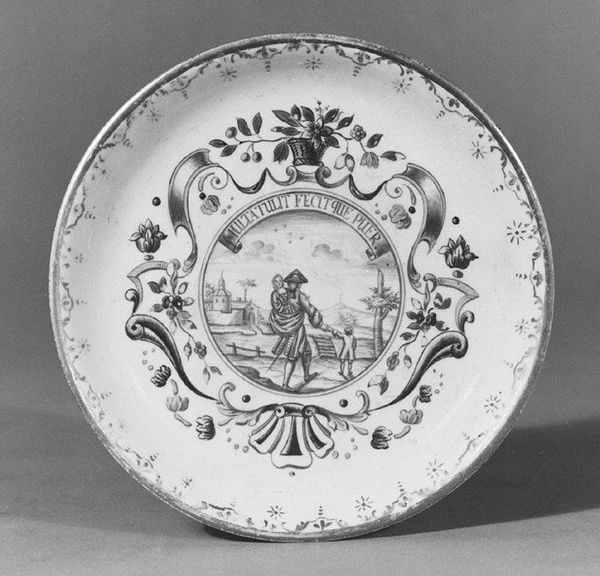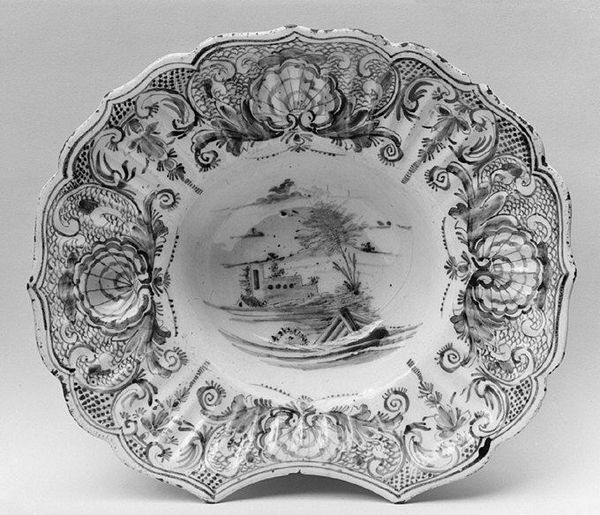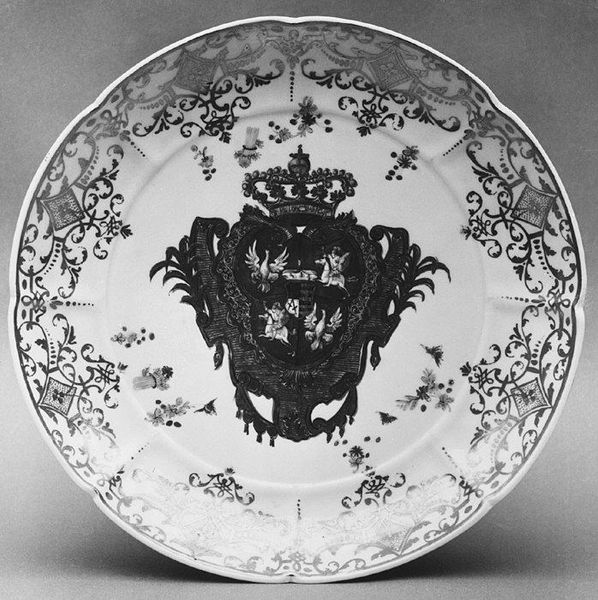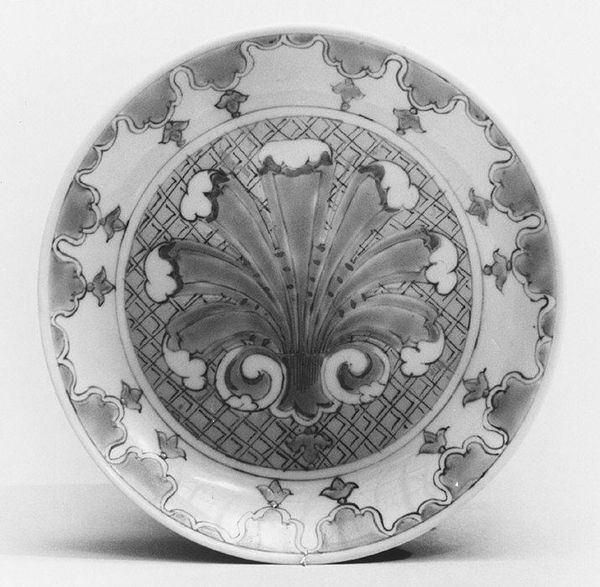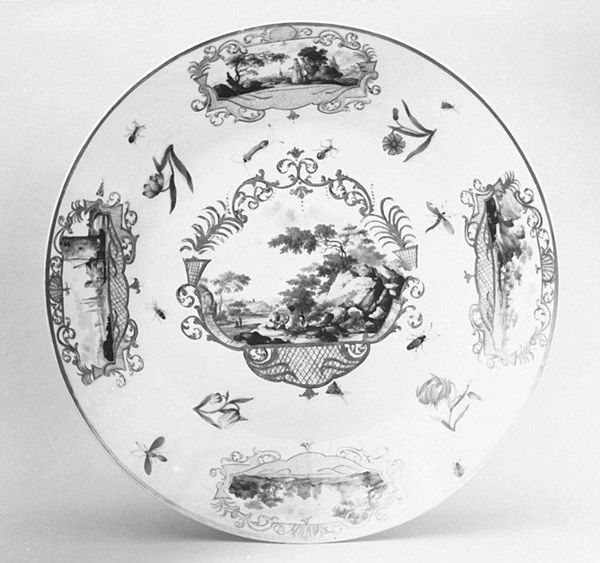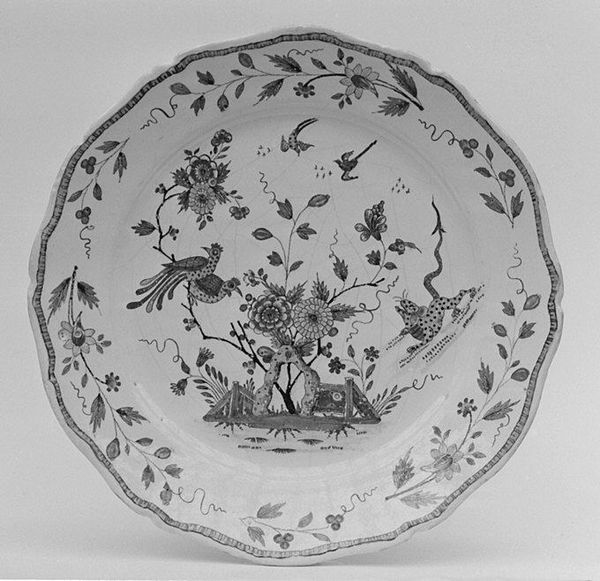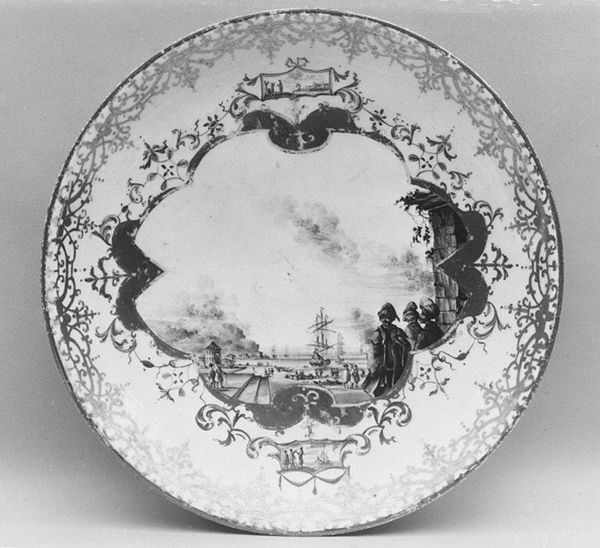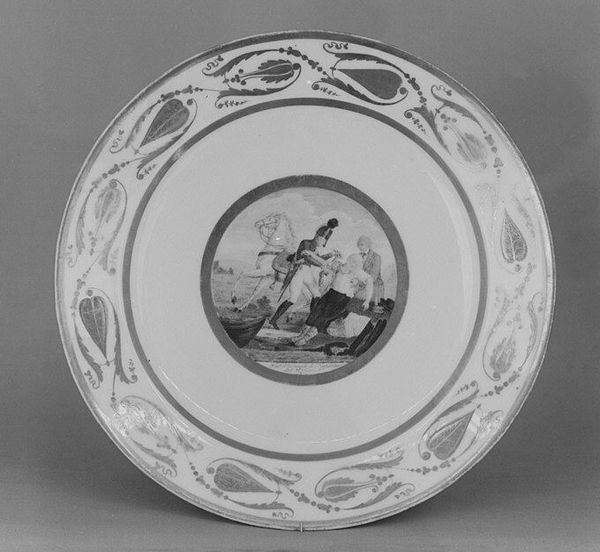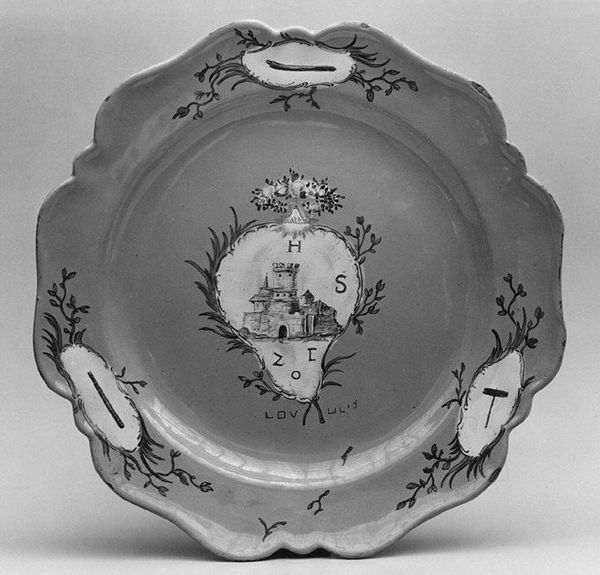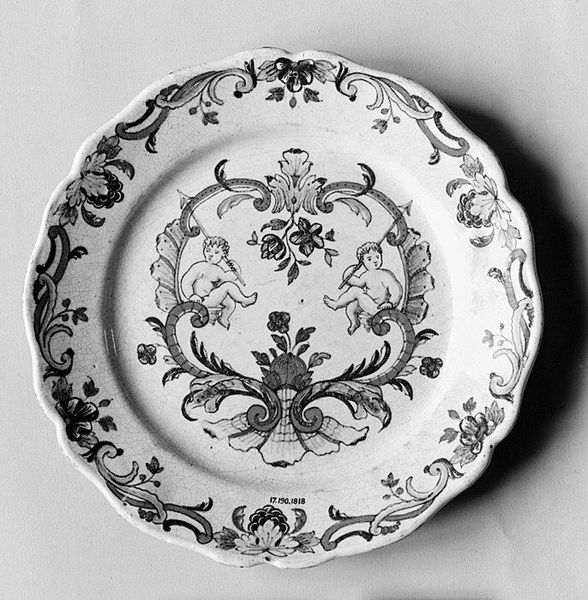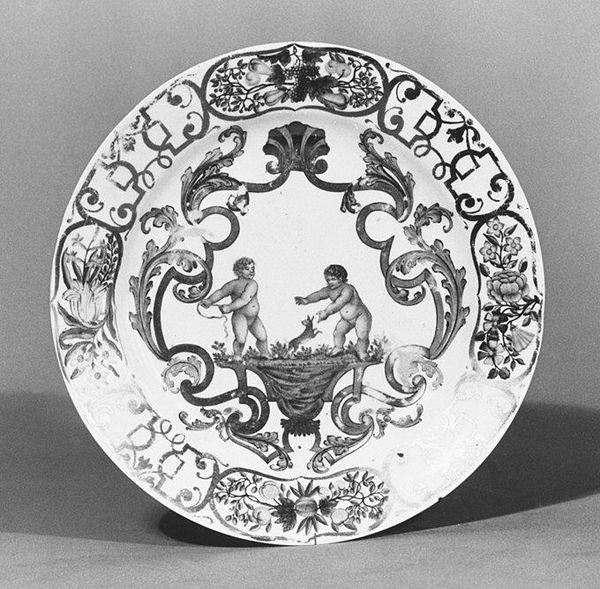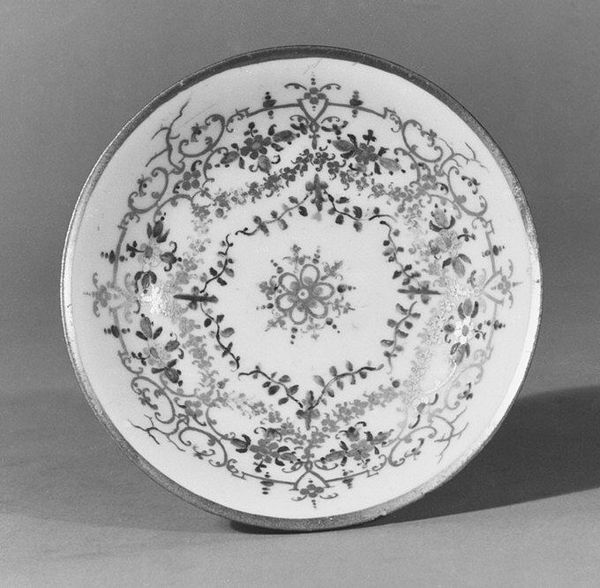
ceramic, porcelain, sculpture
#
ceramic
#
porcelain
#
figuration
#
sculpture
#
ceramic
#
genre-painting
#
history-painting
#
decorative-art
#
miniature
#
rococo
Dimensions: Diameter: 5 1/4 in. (13.3 cm)
Copyright: Public Domain
Curator: I'm struck by the overwhelming sense of detail and refinement in this piece. It feels like peering into a miniature world. Editor: Exactly! The Met is home to this stunning "Saucer," created around 1725-1730. It's an exquisite example of Rococo decorative art crafted from porcelain. What strikes you about its social context? Curator: Well, the very existence of such an object speaks volumes about the patronage system of the 18th century. Porcelain, especially of this quality, was a luxury item, destined for aristocratic tables and display cabinets. Its miniature scale further emphasizes its exclusivity and value. These weren't everyday objects; they were statements of wealth and refinement. Editor: I agree. The central image feels like a play within a play, all contained on this little dish. What story do you see unfolding in that tiny painting? Curator: A hunt, undoubtedly! A dynamic scene of hunters, horses, and pursued game. It’s an elaborate vignette encapsulating noble pastimes and valorizing elite recreational activities. Note the carefully arranged border figures; they aren't just decorative. They allude to hunting themes that permeate elite culture and aesthetics during this period. Editor: So it's less about the utilitarian function of a saucer and more about... conveying a certain kind of elevated lifestyle. Do you see any irony in such grand narratives being depicted on such an intimate, domestic scale? Curator: I wouldn't call it irony, but perhaps a certain intimacy allowed for the dissemination of social ideology on a smaller scale. These objects functioned as visual props to daily life that helped consolidate those ideas and the dominance of the ruling elites. Editor: I see your point! I am captivated by the craftsmanship. To be able to condense so much detail and drama into a limited ceramic canvas… The entire enterprise is almost absurd. Curator: Rococo loved that playfulness. And the soft pastel tones and graceful ornamentation really reflect the tastes that spread all over Europe. Editor: What a compelling illustration of artistry and society mingling on a modest object! Curator: Indeed. Every element, from subject to medium, gives us valuable insight into the dynamics of that period.
Comments
No comments
Be the first to comment and join the conversation on the ultimate creative platform.
